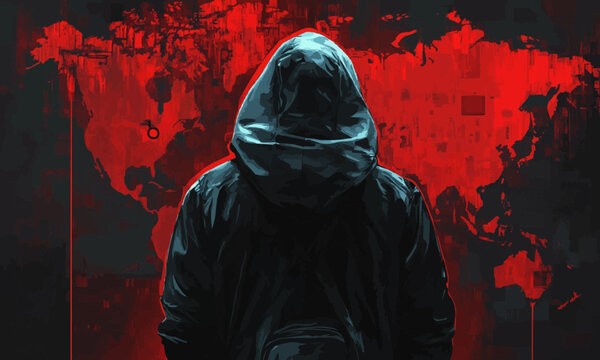At the dawn of the 21st century, the West declared the triumph of its world order. Liberal democracy was not just an ideology; it became a system with no alternative. But, as the events of the past decade have shown, the stability of this order was illusory. The world has entered a phase of invisible, asymmetric conflict, where the old rules no longer apply. Security is no longer just a matter of armies and borders—it's dissolved into data streams, algorithms, cyberattacks, and information manipulation. Europe, once confident in its invulnerability, turned out to be the most vulnerable.
The Paradox of Calm: Security as a Backdrop, Not a Strategy
The fundamental crisis in European security didn’t begin with tanks or terrorists. It started with perception. After the collapse of the Soviet Union and the end of the Cold War, the Western world believed that the era of strategic conflicts had ended. This sentiment was best expressed by American political scientist Francis Fukuyama in The End of History: liberal democracy had won, history was over. But as the 21st century unfolded, history didn’t end—it simply changed its face.
After 2001, Europe faced waves of violence—terrorist attacks in London, Paris, Brussels. However, unlike direct aggression, cyber threats and hybrid warfare were not perceived as existential challenges but as technical incidents. This turned out to be a strategic mistake.
Cyberattacks are no longer a mere side element to military actions. Since 2015, the European Union alone has recorded over 450 incidents classified as attacks on critical infrastructure. Among the largest:
- The 2015 Bundestag attack, carried out by the APT28 group linked to Russia’s GRU, which resulted in the loss and leak of 16 terabytes of data.
- The 2021 attack on Ireland's healthcare system, which paralyzed hospitals for 10 days. According to Ireland’s National Cybersecurity Centre, the damage was around €600 million.
- In 2023, a coordinated attack on Poland and Czechia's energy networks caused blackouts lasting 48 hours in five major cities.
The EU has belatedly recognized: cyberspace has become the arena for a systemic war. As early as 2022, the EU's Strategic Compass officially prioritized cyber defense on par with military protection. However, by 2025, according to the European Court of Auditors, only eight of the 27 EU countries had ensured the basic compatibility of their cyber structures with the European standard NIS2.
European intelligence practices are increasingly noting not just attacks on servers, but complex scenarios involving psychological operations (PSYOPS), disinformation, and media discourse manipulation. NATO’s March 2025 report emphasizes: today’s hybrid threat is no longer just “malicious code” but “a multi-layered process of undermining trust in institutions through digital mimicry.”
An example is the 2024 interference in Slovakia's elections, where hackers spread disinformation via messengers and fake TikTok and Telegram accounts. The result was a sharp decline in voter turnout and the delegitimization of the election results. The European External Action Service (EEAS) reported in January 2025: “Destructive AI-generated narratives are becoming the biggest threat to the youth audience in the EU.”
One of the most significant paradoxes is the trust crisis within the EU itself. According to Eurobarometer (April 2025), only 38% of EU citizens believe Brussels can protect them from digital threats. Trust is especially low in Hungary (19%), Slovakia (22%), and France (29%).
In this context, Azerbaijan is seen by several countries as a potential neutral hub for digital transit and communications. In April 2025, Geneva hosted discussions on the creation of an Eastern Cyber Channel—a secure data exchange route between Central Asia, the South Caucasus, and Europe, bypassing unstable routes through Russia. Analysts from the Digital Sovereignty Initiative highlight that "positioning Baku as a digital hub aligns with the logic of diversifying trust."
Europe has entered an era where armies are powerless unless supported by algorithms. Traditional collective security models are outdated. Neither NATO nor the EU is prepared to respond quickly to attacks that unfold in nanoseconds, targeting consciousness rather than territory.
Unlike many European states, Azerbaijan has recognized the importance of digital sovereignty as a core element of national security. Strategic planning in Baku now includes elements for protecting the information environment, anti-disinformation analytics, and scenario modeling for potential attacks.
Meanwhile, Europe is still searching for enemies in the real world, even as they have long been acting in code. While Europe continues to seek solutions within 20th-century structures, Azerbaijan is already building 21st-century solutions. Not on paper—but in the architecture of servers and a well-structured sovereignty policy.
History hasn’t ended. It has simply changed its language—and those who fail to learn it will be left without a voice and without protection.
The New Geopolitics: The Battle of Algorithms
The digital realm has become a theater of a new type of war. The battles are no longer fought for territory, but for cognitive dominance, for control over the masses' consciousness and the decision-making infrastructure. Undermining trust in elections, delegitimizing institutions, mass manipulation—these are no longer predictions, but practices.
Digital aggression is an attack on sovereignty in its postmodern form. It’s an attempt to turn society into an algorithmic target, bombarding it through fake news, fake accounts, and distorted trends. This is not only a security threat; it is a threat to identity.
We are witnessing a fundamental shift in the landscape of international security. Hybrid attacks have long crossed the line between legitimate foreign policy tools and the covert undermining of statehood. They do not cross the threshold into open war—and that is precisely what makes them so dangerous. Their strategy relies on subtlety, and their effectiveness lies in the indecisiveness of their victims.
Modern democratic societies, built on the rule of law, are proving vulnerable to this new type of threat: those who follow the rules are always outplayed by those who act outside of them. This is the core dilemma of hybrid warfare: it doesn’t target armies or infrastructure so much as it attacks the very principles on which free societies are built. The enemy deliberately avoids direct confrontation, opting instead to destroy trust, undermine resilience, and fracture civic consensus. The response, if it’s even possible, demands not only technology and political will, but a new strategic mindset.
Nation-states are organized by sectors—police, intelligence, IT security, justice—each responsible for its own domain. But hybrid threats know no boundaries. They operate in the "gray zone," where the distinction between internal and external security blurs, where the line between criminal activity and acts of aggression vanishes, and where disinformation becomes a weapon.
Western European countries are being forced to build a new security architecture, one that prioritizes horizontal coordination. In Germany, this process is just beginning—cyber-resilience mechanisms are being created at the strategic level, and federal agencies are learning to work as a unified whole. The focus is on transparency, data sharing, clear definitions of responsibilities, and, most importantly, institutional awareness: every structure must know what is expected of it and how it plays into the broader strategy.
But even this is only part of the challenge. The hybrid attacker has long since adapted to the bureaucratic weaknesses of democracies. It acts quickly, while democracies act slowly. It attacks instantaneously, while they respond through committees and negotiations. This asymmetric nature of the conflict makes the fight against hybrid aggression one of the most complex challenges of our time.
By 2025, the concept of war has definitively moved beyond the confines of classical geopolitics. Tanks and missiles still have their place in state arsenals, but the decisive factor now lies in what can’t be seen in news feeds—the manipulation of perception, control over the narrative, the destruction of identity through codes, hashtags, and visual cues. This is no longer just cyber warfare. It is a systemic, multi-layered informational-psychological aggression, aimed at undermining a society's ability to think rationally, to act collectively, and to resist.
Azerbaijan as the Object and Subject of Hybrid Pressure
Since 2020, Azerbaijan has found itself in a special zone of attention for transnational disinformation networks. Following its victory in the 44-day war and the restoration of control over Karabakh, the country has become a target of large-scale psychological operations, initiated both from Yerevan and supported by external entities, including a number of European NGOs, media outlets, and political foundations.
From January to May 2025 alone, Azerbaijan's State Service for Special Communication and Information Security (GSSCA) recorded over 4,700 attempts of information attacks, including:
- The spread of fake maps distorting borders;
- The creation of pseudo-journalistic investigations about "repression" and "ethnic cleansing";
- Fabricating supposed leaks about military operations or internal conflicts;
- Attacks on the digital infrastructure of government agencies and strategic enterprises.
A report by the Center for Analysis of International Relations (AIR Center) from June 3, 2025, highlights: "Information attacks against Azerbaijan are coordinated with the aim of undermining the legitimacy of the state, delegitimizing its international agenda, and framing the country as the 'aggressor' on the global stage." The sources behind these campaigns are often disguised as "neutral" European platforms.
The Main Goal of Hybrid Warfare: Disrupting the Cognitive Architecture of Society
While classical warfare destroys bridges and roads, digital warfare targets trust, unity, and critical thinking. The 2025 UNESCO report underscores this reality: “70% of youth in developing countries get their news exclusively from social media. Over 60% don’t verify sources. And 40% can’t distinguish between fake news and reliable information.”
For nations with high digital penetration—like Azerbaijan, where internet coverage reaches nearly 90% of the population—this signifies vulnerability not just in cybersecurity, but in national resilience as well.
The response to hybrid attacks cannot be purely repressive or purely technical. It must be multi-layered, horizontal, and preventive. Azerbaijan is already taking steps in this direction:
- In 2024, the National Strategy for Strategic Communications was approved, which includes monitoring disinformation, teaching media literacy in schools and universities, and supporting independent fact-checking.
- A Digital Resilience Center was created under the Ministry of Digital Development and Transport, conducting systematic analysis of the sources of fake news and manipulative narrative trends.
- A series of initiatives have been launched in partnership with the private sector, including mobilizing IT companies, TV channels, and influencers to create educational content that enhances critical thinking.
But the most important development is the creation of a new cultural matrix of resilience, where the responsibility for information hygiene is shared not only by the state but also by civil society, NGOs, academic institutions, and businesses.
The International Aspect: From Technological Dependence to Strategic Sovereignty
The key threat lies in the monopoly on digital infrastructure. A large portion of Azerbaijan's content flows, like most countries in the region, pass through platforms registered in jurisdictions where different legal and political principles apply. This makes diplomatic efforts to create alternatives critically important:
- Participation in projects like the Turkic Digital Union, which aims to create an independent platform ecosystem;
- Cooperation with the OIC, ASEAN, and OECD on information security matters;
- Initiatives under the UN's Center for Resilience to Disinformation, where Azerbaijan has been part of an expert group focused on countering digital threats since 2025.
Hybrid warfare is not merely a new form of threat. It is a new test of maturity for states and societies. The ability to recognize, predict, and neutralize informational and psychological attacks is no longer a special operation—it’s an everyday necessity.
Azerbaijan, facing immense external pressure—from fake reports on "genocide" to fabricated investigations against state institutions—not only defends itself but also builds a proactive model of strategic resilience. This path is not about fighting shadows, but about creating a new landscape of interpretations, where truth is defended not by slogans, but by facts; not by propaganda, but by critical thinking; not by censorship, but by digital sovereignty.
We have entered an era where national defense begins with the protection of its cognitive architecture. And here lies the ultimate conflict of the 21st century.







